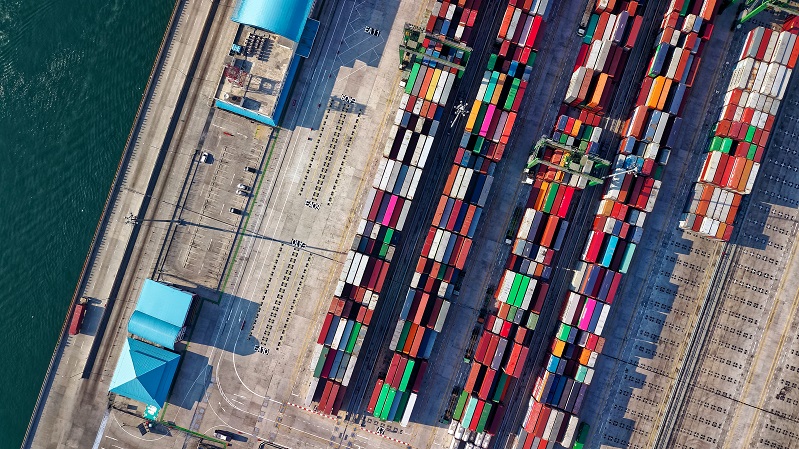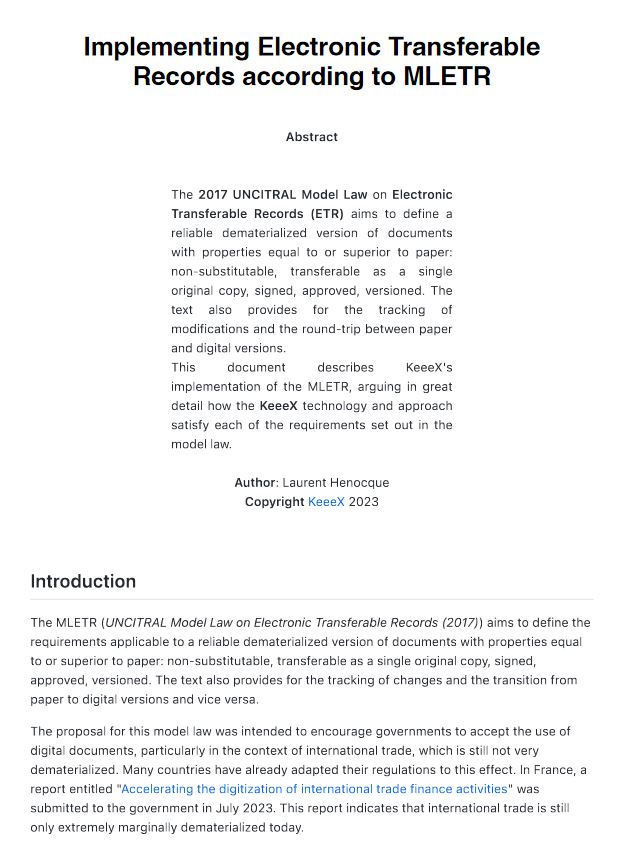Do you know anything about ETR or Electronic Transferable Records ?
If not, you’re about to find out how it works too!
📃 The future of paper is digital, as it finally becomes possible to manipulate files delivering ownership of valuable goods with more probative force than watermarked paper 💶,
This concerns the whole of international trade (notably Trade Finance), which for reasons of trust and disharmony between regional regulations is still very little dematerialized: for example transport 🚢✈️, customs and police 🛃🛂, banks for Documentary Credit 🏦 etc. …
The kick-off was given by the UNCITRAL model law known as MLETR (Model Law for Electronic Transferable Records – 2017), whose transcription project into national law has been progressing since a July 2023 report submitted to the government.
The document below details how KeeeX technology addresses the full requirements of the MLETR.
There can be no doubt in the minds of insiders that NFTs are the first operational example of an electronically transferable title, and that ETR is therefore intrinsically a Web3 subject, and in our view its finest example as an instance of a global data lineage problem.
KeeeX was able to leverage its NFT technical proposal by filing a new patent opening up the potential of files certified as tamper-proof and carrying variable secondary properties attested by registers (blockchain if possible). The ETR in fact carries several such properties: the rights holder, the controller(s), the status (active/expired), the return to paper, the most recent version… The strength of this proposal comes from the unalterable bidirectional link between the keeexed file and the smart contract describing the value of each variable property.
This, of course, takes advantage of KeeeX’s historic technology and other innovations, including the recently revealed kxmash multihash.
Enjoy your reading!
PS: document keeexed and verifiable at https://services.keeex.me/verify 👇


